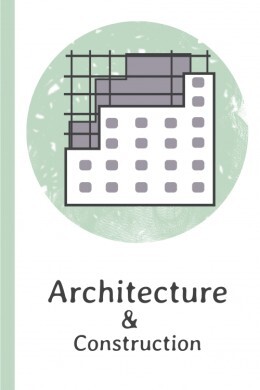a style of art and architecture, predominant in late 19th century, marked by complex curved patterns depicting natural objects such as flowers and plants

新艺术, 新艺术运动
an ornate and grand style of art, music, and architecture present in the 17th and early 18th centuries in Europe

巴洛克, 巴洛克风格
a style of architecture, originated in Germany in early 20th century, with simple and practical geometric designs and no elaborate decorations, using materials such as concrete, steel, and glass

包豪斯, 包豪斯风格
a style or movement in art, literature, and architecture developed in the beginning of 20th century that greatly differs from ones that are traditional

现代主义, 现代主义运动
the architectural style prevalent during the reign of Queen Victoria in Britain, characterized by ornate details, eclectic influences, and a combination of Gothic Revival, Italianate, and Queen Anne styles

维多利亚式建筑
the architectural style that prevailed in Western Europe during the 11th and 12th centuries, characterized by its thick walls, rounded arches, and sturdy construction

罗马式建筑, 罗马式风格
the architectural style prevalent in England during the Tudor period, characterized by half-timbered structures, steep gabled roofs, ornamental brickwork, and decorative details

都铎式建筑, 都铎建筑风格
the architectural style that emerged in the late 19th century, emphasizing craftsmanship, natural materials, and traditional techniques

工艺美术建筑, 工艺美术建筑风格
a movement and style in art, literature, architecture, etc. in the 20th century, which reacted against modernism and is usually marked by a return to earlier styles and inclusion of features from various periods

后现代主义
the architectural style that emerged in Normandy and England during the medieval period, characterized by sturdy construction, rounded arches, and decorative elements

诺曼式建筑, 诺曼建筑风格
a style of English Gothic architecture that emerged in the late 14th century, characterized by vertical lines, elaborate window tracery, and a focus on intricate detailing and ornamentation

垂直建筑, 垂直风格
a style of architecture that was popular in early 19th century England, emphasizing elegance, symmetry, and proportion

摄政时期建筑, 摄政时期建筑风格
architectural styles, designs, and techniques that are rooted in historical, cultural, or regional contexts, often embodying enduring principles and craftsmanship

传统建筑, 古典建筑
an architectural style that breaks down traditional design elements and uses unconventional shapes and forms to create buildings that appear fragmented, distorted, and unpredictable

解构主义, 解构主义风格
the practice of designing and constructing buildings that prioritize environmental responsibility, energy efficiency, resource conservation, and the well-being of occupants

可持续建筑, 绿色建筑
the architectural styles influenced by Islamic culture, featuring intricate geometric patterns and decorative elements

伊斯兰建筑, 伊斯兰建筑风格
the architectural style prevalent during the reign of King Edward VII, characterized by a mix of traditional and modern design elements

爱德华式建筑, 爱德华式建筑风格
the architectural style of the Georgian period, 1714-1830, featuring symmetrical designs, classical influences, and refined detailing

乔治亚建筑, 乔治亚式建筑风格
a style of architecture that makes the building's structure an important part of its artistic design, resulting in visually interesting and unique buildings

结构表现主义, 表现主义结构主义
an architectural style that emerged in the 1930s characterized by sleek, aerodynamic forms, smooth curved lines, and an emphasis on the horizontal design elements

流线型现代风格, 空气动力学风格
the architectural styles and structures developed by the ancient Romans, characterized by monumental buildings and classical elements such as arches and vaults

古罗马建筑, 古罗马的建筑
the architectural style that emerged during the Renaissance period, characterized by a revival of classical elements, harmonious proportions, and humanist design principles

文艺复兴建筑, 文艺复兴时期的建筑风格
a modernist architectural movement that emerged in the early 20th century, characterized by functionalism, simplicity, and the use of industrial materials such as glass, steel, and concrete

国际风格, 国际运动
an elaborate and heavily decorated style of art, architecture, and furniture with asymmetrical patterns that was prevalent in Europe in the 18th century

洛可可, 洛可可风格
the architectural style that developed in the Byzantine Empire, characterized by its use of domes, elaborate decoration, and a fusion of Roman, Greek, and Eastern influences

拜占庭建筑, 拜占庭建筑风格
a style influenced by ancient Greek and Roman designs, known for its balanced proportions and use of classical elements like columns and pediments

古典建筑, 古典建筑风格
the architectural style that emerged during the colonial period, often characterized by symmetrical designs, decorative details, and influences from the colonizing country's architectural traditions

殖民建筑, 殖民建筑风格
the architectural style of the present time, characterized by innovative design, experimentation, and a focus on sustainable and technology-driven solutions

当代建筑, 现代建筑
an architectural style that combines classical design elements with contemporary aesthetics and technologies

新古典主义, 现代新古典主义
the architectural style developed by the ancient Greeks, characterized by its use of proportion, harmony, and distinctive elements such as columns, pediments, and entablatures

古希腊建筑, 古希腊的建筑风格
an architectural style that emerged in the 18th and 19th centuries, characterized by the reintroduction of Gothic elements and forms inspired by medieval architecture

哥特复兴, 新哥特式
the architectural movement that sought to revive or recreate architectural styles from the past, often drawing inspiration from historical periods such as Classical, Gothic, or Renaissance

复兴主义, 建筑复兴运动
a style that draws inspiration from classical Greek and Roman architecture, characterized by symmetry, simplicity, and the use of classical elements such as columns and pediments

新古典主义建筑, 建筑中的新古典主义风格
a distinctive architectural style characterized by the use of bold shapes, dynamic forms, and expressive design elements to evoke emotional responses

表现主义建筑, 表现主义建筑风格
an architecture style that is used for building ordinary constructions rather than impressive and remarkable buildings

vernacular, vernacular建筑
the distinctive architectural style developed by the ancient Egyptians, characterized by monumental structures, grandiose temples, and the use of symbolic motifs such as obelisks and pyramids

古埃及建筑, 古埃及的建筑风格
the architectural style associated with the Cistercian order of monks, known for its simplicity, austerity, and emphasis on functional design, with features such as unadorned walls, large windows, and open, light-filled spaces

西多会建筑, 西多会建筑风格
a futuristic design movement that combines architecture, art, and technology with a focus on innovation and sustainability

新未来主义, 新未来派
an architectural movement that combines modern design principles with local cultural, climatic, and contextual considerations to create buildings that are both contemporary and rooted in their specific regional context

区域现代主义, 现代区域主义
an architectural style characterized by the use of computational design tools and algorithms to generate complex and organic forms

参数化主义, 参数化风格
a style that originated in medieval Europe, characterized by pointed arches, ribbed vaults, and flying buttresses

哥特式建筑, 哥特风格
a style of art, popular in 1920s and 1930s, characterized by the frequent use of geometric shapes with distinct borders and strong colors

装饰艺术, 装饰艺术风格
a contemporary architectural style that combines modern design principles with innovative materials and technologies

新现代主义, 新现代风格
a style characterized by the rejection of strict modernist principles and the incorporation of diverse architectural elements, historical references, and playful design elementS

后现代主义建筑, 后现代主义建筑风格
a style or approach that combines various architectural influences, elements, or styles from different time periods or cultures to create a unique and diverse design

折衷主义, 建筑融合
a style of Gothic architecture that emerged in the late 12th century in England and is characterized by pointed arches, ribbed vaults, and large windows with geometric tracery

早期英国哥特式, 第一个英国哥特式
the architectural style prevalent in Europe during the Middle Ages, characterized by features such as pointed arches, ribbed vaults, flying buttresses, and intricate stone carvings

中世纪建筑, 中世纪建筑风格
an architectural style or arrangement featuring a portico or building façade with ten columns across its width

十柱式, 带有十根柱子的建筑风格
a style in architecture characterized by stark high-rise concrete structures with exposed concrete surfaces that reveal the texture of the material and the building method

粗野主义建筑, 建筑中的粗野主义风格


